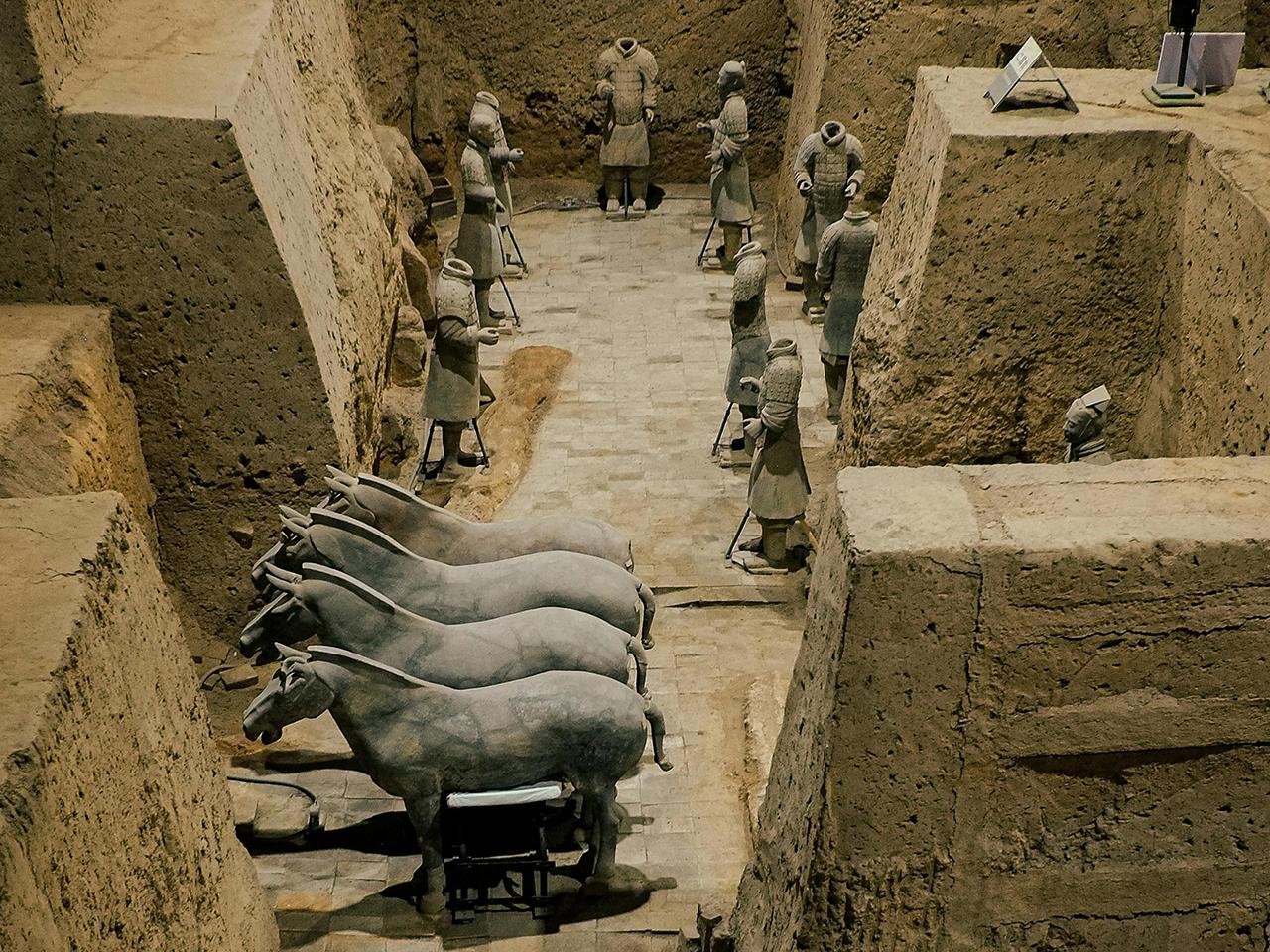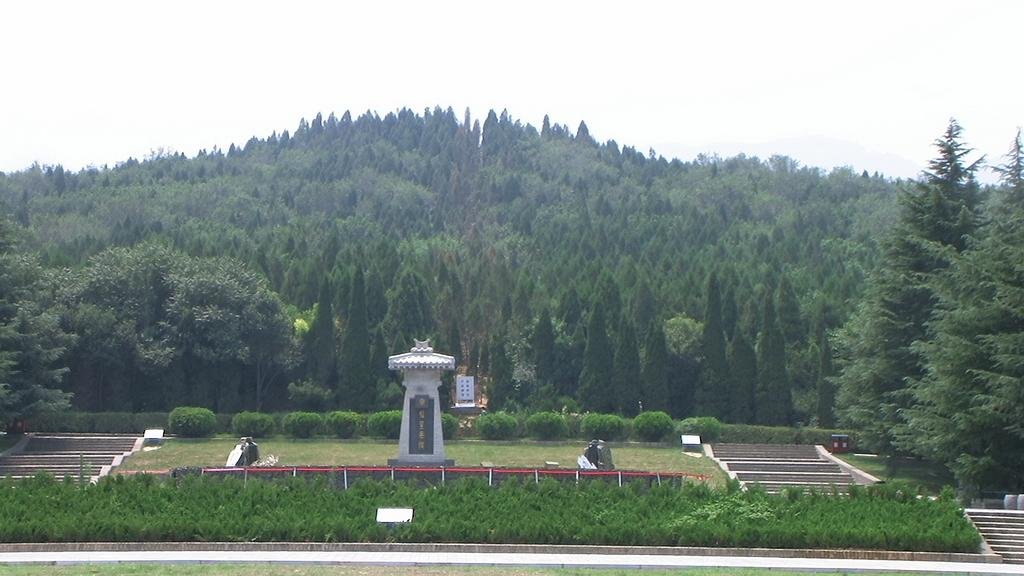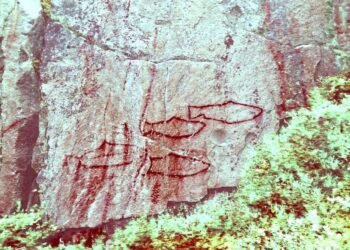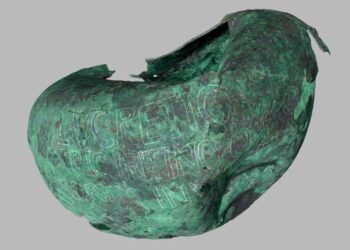Archaeological surveys in Xunyang City, in Ankang, Shaanxi province, have revealed the origins of the mercury found in the Mausoleum of Qin Shi Huang.

Qin Shi Huang, China’s first emperor, is renowned for uniting China and for having commissioned a gargantuan burial site, a complex that took 38 years to build with 700,000 workers. The latest research suggests that the mercury in the emperor’s tomb could have come from Xunyang’s mines of cinnabar, an area with a longstanding mining and smelting history.
The Mausoleum of Qin Shi Huang, in Xi’an’s Lintong District, has fascinated researchers and historians for centuries. The Historical Records of the Grand Historian, by Sima Qian, mentions in detail the interior of the tomb as having a colossal map of China’s seas and rivers built with liquid mercury, depicting the domain of the emperor. A study conducted in 2016 recorded high mercury concentrations in and around the mausoleum, far exceeding the regional norm, supporting claims from historical texts.
According to China Times, Archaeologists have been treading a path that leads them to cinnabar, a mercuric sulfide ore, mined and smelted in ancient times, in their quest to trace the mercury to its source. In a survey recently conducted in Xunyang, three significant locations—Shimiaogou, Chuantangping, and Guojiawan—associated with cinnabar mining and trading have been discovered. All three locations, in the valley of the Shengjia River, have yielded artifacts and cultural items dating from the Neolithic period to the Qing Dynasty, suggesting continued mining for centuries.

The Shimiaogou site, located near the Xunyang Qingtonggou cinnabar mining district, yielded artifacts such as Neolithic basket-motif ceramic sherds and Qin Dynasty rope-motif roofing tiles. These findings confirm the site’s role in cinnabar mining and processing during the pre-Qin and Han periods. Meanwhile, the Chuantangping and Guojiawan sites, which sit near transportation routes, exhibited signs of transporting cinnabar from the mines. Perforated stones, sand-tempered red pottery, and fired-clay blocks at these locations speak to the sophisticated networks of trade during the period.
The connection between Xunyang’s cinnabar mines and the final resting place of the emperor tells a lot about the ancient development of resources. The findings not only enhance our understanding of Qin Shi Huang’s burial complex but also detail how commercial networks and early mining technology supported monumental construction.
























Disclaimer: This website is a science-focused magazine that welcomes both academic and non-academic audiences. Comments are written by users and may include personal opinions or unverified claims. They do not necessarily reflect the views of our editorial team or rely on scientific evidence.
Comment Policy: We kindly ask all commenters to engage respectfully. Comments that contain offensive, insulting, degrading, discriminatory, or racist content will be automatically removed.
I kept wondering why there was so much mercury at this site and what the purpose may have been in using it. I did a google search and it’s been suggested that the Chinese considered mercury the water of life and thus immortality and there was an article that insinuated a ‘river of mercury’ surrounded this area. Perhaps this could be elaborated on, it’s quite interesting.
For many years I have studied about this first Chinese emperor of this dynasty. I have intrigued and fascinated by his act of will upon his subjects that they would accomplish if not in this life but in the life after death continue to support him in his terra cota army.. I study both this Chinese emperor and I study the Mayan civilization also.
Study Palestinian civilization
Why? No one cares!
Show some restraint. I’m Jewish, raised in a Christian country and I care. Palestinians and Jewish share ancestry. Their history is rich with stories that are of historical value to all nations who practice the Abrahamic faiths. Just because your are ignorant, doesnt mean everyone else wishes to be. Palestinians are a living history. Their beliefs, customs, religions, practices are an embodiment of political and religious systems.
Yes! You are correct.
Wounderfull reading about all the articles about Scientific-side to archaeology ,stories, as well the research of the early convict days of the convict days of our colonial past , was very interesting especially the traces of food under the floor boards just amazing I’m new to all of this great information,wounderfull reading,hopefully there a lot more similar glimpses into the past thanks so much for all your research & effort
Has mercury been found in any other archaeological sites in the world. I think I once read of some found somewhere but I cannot recall where.
Yes,all very interesting but there are far more important issues in the present to occupy our minds, remember that!
can’t believe you are serious. you’re saying just because we got issues we shouldn’t read about the amazing history? actually, reading and studying history IS A VERY IMPORTANT thing, “history repeats it’s self” they say. studying and learning from our amazing history should be an important matter, you see.
Fascinating read! The discovery of mercury in the mausoleum of the first Qin emperor adds another layer to our understanding of ancient burial practices. It’s intriguing to think about the implications of this finding on our perception of the emperor’s beliefs and the significance of such materials in their culture. I can’t wait to see what further research uncovers!
This discovery about the source of mercury in the mausoleum of the first Qin emperor is fascinating! It sheds light on the advanced engineering and burial practices of ancient China. I wonder how this new evidence will change our understanding of the emperor’s tomb and its significance. Excited to see further research unfold!
Fascinating read! It’s incredible to think about the engineering and resources that went into the mausoleum of the first Qin emperor. The discovery of mercury as a potential source really adds a new layer to our understanding of ancient Chinese burial practices. I can’t wait to learn more about the implications of this finding on our perception of Qin Shi Huang’s legacy!
Fascinating read! It’s incredible that new evidence is shedding light on the mercury source in the mausoleum of the first Qin emperor. It makes me wonder about the methods used to uncover this information and what it tells us about ancient burial practices. Looking forward to more updates on this topic!